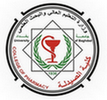The Faculty of Pharmacy discussed the master’s thesis “Effects of Cranberry Fruit Extract on Cisplatin-induced Genotoxic Potential (in the Bone Marrow) and Oxidative Stress in Male Mice Kidney” by Baidaa Ibrahim Mohammed and her supervisor, Professor Dr Nada N. Al-Shawi, in the Pharmacology and Toxicology Department. The objective of the thesis was to investigate the effects of cranberry powder extract administered daily for 7 days prior to cisplatin on the genotoxicity (assessed by chromosomal aberration assays and micronucleus test (MNT) in the bone marrow (BM), and on oxidative stress potential in the serum of mice by utilizing selected parameters [Malondialdehyde (MDA), and reduced glutathione GSH]; and on the serum kidney function parameters (urea and creatinine) levels; in addition to the histological examination of kidney architecture. The thesis included twenty-eight (28) male albino mice that were obtained from The Animal House, College of the Pharmacy/University of Baghdad. Their average weight was (25-30 gms) and they were randomly divided into 4 groups (7mice/group and each was kept in a separate plastic cage) as follows: Group I [Negative control/mice received oral normal saline by gavage tube]; Group II [mice received oral cranberry fruit extract alone (200 mg/kg) alone]; Group III [mice received single intraperitoneal injection of cisplatin (12mg/kg) on day 7]; Group IV [mice received oral cranberry fruits extract followed by a single intraperitoneal injection of cisplatin on day 7]. Twenty-four hours after the end of the treatment duration (i.e., on day 8), mice were euthanized by diethyl ether, and then the blood was obtained by the retro-orbital route to obtain serum, which was utilized for the determination of [creatinine and urea levels]; then, after cervical dislocation, a section of kidney tissue homogenate was obtained and utilized for the measurement of oxidative stress markers (malondialdehyde, and reduced glutathione); furthermore, histological examinations of stained mice kidney sections were performed. In addition, samples of femur bone marrow cells of male mice were aspirated for genotoxic analyses (mitotic index, chromosomal aberrations, and micronucleus appearance).In Group III mice, a single intraperitoneal injection of cisplatin (12mg/kg) caused a significant -increase (P<0.05) in serum levels of urea and creatinine, with a significant (P<0.05) reduction in renal levels of reduced glutathione, and abnormalities in kidney architecture. In addition, the mitotic index of the bone marrow cells was significantly-declined (P<0.05), with the total and individual chromosomal aberrations; moreover, the micronucleus (MN) appearance in bone marrow cells, was significantly-elevated (P<0.05) compared to those in the control group of mice. Furthermore, in group of mice that orally-administered cranberry fruit extract (200 mg/kg) prior to cisplatin produced a significant (P<0.05) reduction in the serum levels of creatinine, with a significant elevation in renal levels of reduced glutathione and improvement in the histological of kidney architecture; the mitotic index in the bone marrow cells was significantly elevated (P<0.05), with a significant decline (P<0.05) in the total and individual chromosomal aberrations and the micronucleus appearance in bone marrow cells compared to group of mice injected with a single dose of cisplatin. According to results obtained from this thesis, it can be concluded that the cranberry fruit extract orally-utilized at a dose of (200mg/kg) for 7 days prior to cisplatin, exerted a protective effect against nephrotoxicity and it improved the genotoxic effects induced by cisplatin in mice’ bone marrow cells via improvement of oxidative stress mechanisms.


